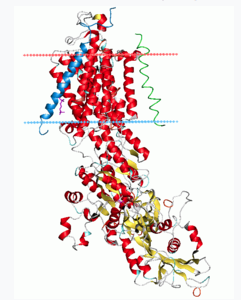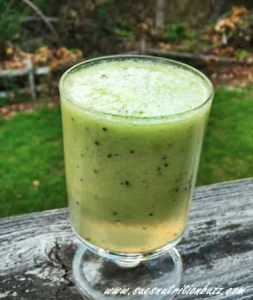
Sodium Potassium ATPase Pump
It has long been the belief in the medical community, and many studies have been conducted to support this belief, that over-consumption of salt in the diet is a major culprit when it comes to the risk of, and actual development of, high blood pressure.
And many doctors will suggest cutting back on salt intake as one of the first courses of action to a patient who is starting to deal with blood pressure issues.
Unfortunately, salt - in its different forms - is one ingredient which adds great flavour to all sort of foods, and this means that we unwittingly ingest more salt than we should, especially if our eating habits involve large amounts of processed foods, or frequent visit to fast food restaurants.
So you would think that by paying attention to the amount of salt in our foods, we should have no problem dealing with our blood pressure issues. However it turns out that the situation is more complicated than that!!
There is another side to the equation… Potassium
Role of the Sodium Potassium Pump
There is at the cellular level in our bodies an important relationship between Sodium and Potassium. Whilst Sodium has the effect of drawing more water into blood vessels which ultimately raises blood volume and hence blood pressure, Potassium has the opposite action of driving excess water out of blood vessels and thus lowering blood volume. The fluid is then excreted by the kidneys along with the excess sodium and this helps to lower blood pressure.
Thus it can be seen that this process which is called the SODIUM POTASSIUM PUMP is essential for maintaining balance between sodium and potassium and thereby helping to keep blood pressure in check.
So, the reason why the sodium potassium pump is important is that it is designed to maintain this balance by drawing potassium into the cells whilst flushing sodium out.
But where this balance starts to go awry is when we eat foods which overload the body with sodium whilst leaving it deficient in potassium. And if we take a look at the typical Western Diet we soon see that this imbalance is all too obvious.
The average daily consumption of sodium around the world is estimated to be just under 4000mg whilst the World Health Organization recommended intake of sodium sits at 2000mg. In the States alone it is estimated that 90% of Americans are eating too much salt in their diets …
and the 5 top foods* which have been identified as providing the most salt are:
- Yeast breads
- Chicken and mixed chicken dinners
- Pizza
- Pasta dishes
- Cold cuts
*(source WebMD)
Meanwhile the recommended daily amount (RDA) of Potassium needed is 4700mg according to the USDA.
Alarmingly, it is estimated that only 2% of the population actually consumes the RDA!! Most people are only getting around half that amount!
So the problem with increasing numbers of people suffering from high blood pressure is not at all surprising.
We need to get the sodium protein pump back into balance…
So from the stats quoted above it seems obvious that increasing the intake of potassium rich foods is the answer. And this is where dietary changes can make a difference.
One of the best sources of dietary potassium are the green leafy vegetables such as spinach, beet greens, Swiss chard and kale. Bananas too contain potassium but actually not as much as the following:
- Avocados. 1 avocado has about 975 mg of potassium.
- Tomato sauce. 1 cup has 728 mg.
- Watermelon. 2 medium-sized wedges have 641 mg.
- Winter squash. 1 cup of butternut squash contains 582 mg.
- Sweet potatoes. 1 sweet potato gives you 542 mg.
- Spinach. 1 cup of frozen spinach yields 540 mg.
-
Beets. 1 cup has 518 mg.
Another way to boosting potassium is to add a delicious smoothie to your daily diet.
Below is one which is especially yummy and easy to make:
The Avocado - Kiwi - Melon Blend
This recipe will give you a refreshing drink which is just loaded with potassium, and if you add some spinach to the mix, one glass will give you close to 1000mg of potassium or a quarter of your recommended daily average.
Ingredients

- 1 Avocado
- 1 Kiwi
- 1 cup Honeydew melon (peeled and chopped)
- 1 cup Baby spinach (optional)
- 1 tablespoon Agave Nectar
Method - Peel the kiwi and take out the inside ‘meat’ from the avocado. Next, peel and chop the honeydew melon. Then just blend together kiwi, avocado and honeydew until smooth. This will provide you with 725mg of potassium. To boost the potassium up to 1000mg simply include a cup of baby spinach, and agave nectar for sweetening (if needed) and fully blend.
If you prepare this in advance, and place it in the fridge to chill, then serve - it tastes wonderful!
For more delicious recipes check HERE
Summing Up
Whilst it is true that a salt-reduced diet is important for helping to regulate blood pressure, it is vital not to forget that it is only half of the equation.
Boosting Potassium levels should also be factored in, so that the Sodium Potassium Pump can do its job and thereby ensure that the body can maintain that all important healthy balance which promotes healthy blood pressure levels.
Final Note: the body does need a certain level of sodium for proper functioning. Interestingly, research is now showing that not all salt is created equal.
Check out my article on Salt Hypertension Myth or Reality for more details on this!
